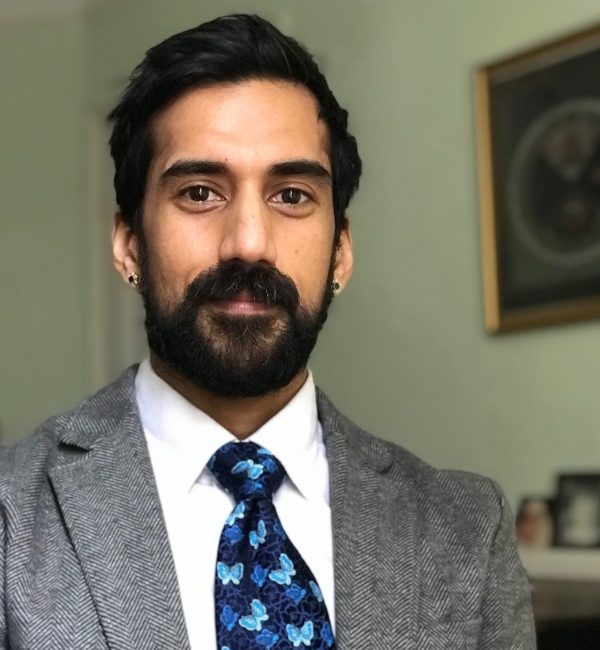
SALEM, MA — The Peabody Essex Museum (PEM) announces the appointment of Siddhartha V. Shah as Curator of Indian and South Asian Art. Shah comes to PEM from Columbia University with academic interests that include the aesthetics of imperial rule in British India, Tantric cults of the Divine Feminine and late 19th century British and French painting. In addition to working as an independent curator, Shah spent 15 years as a gallerist, specializing in Hindu and Buddhist art of the Kathmandu Valley as well as modern and contemporary Indian art.
Shah’s academic and curatorial projects have been featured in publications ranging from India Today and The Times of India to Psychology Today and The New Yorker. His 2011 exhibition at the Serindia Gallery in Bangkok, Tales of Love and Betrayal: A Modern Retelling of the Ramayana, brought together the works of three Indian artists — Nirmala Biluka, Ananda Gadapa, and M.F. Husain — to present a retelling of the ancient epic through a modern visual language.
“Siddhartha Shah is a warm, bold and entrepreneurial art professional with wide-ranging interests in South Asian art,” said Lynda Roscoe Hartigan, PEM’s James B. and Mary Lou Hawkes Deputy Director. “Just as the South Asian field is evolving, in all of his professional, academic and curatorial work, he seeks to bring the rich, multi-faceted traditions of South Asia into more current, relevant conversations about social and religious diversity, tolerance and inclusion.”
At PEM, Shah will develop exhibitions that tell the stories of the artists, communities and traditions of South Asia, as well as important moments in the history of the region. PEM is home to the most important collection of modern-era Indian art, from colonial times to the present, outside of India. In 2001, the acquisition of the Chester and Davida Herwitz collection of post-Independence art from India established PEM as the first museum outside of India to focus on the achievements of its modern artists. With this unparalleled collection, Shah will advance an appreciation for the living artistic traditions of India and South Asia, both locally and globally. “These artistic traditions are — and have always been — dynamic, ever-evolving and forward-moving,” says Shah. “The Herwitz Collection, in particular, allows us to present the art of South Asia and its diverse cultures as connected to the past while looking firmly to the future. With such an extraordinary collection of modern works, we have the ability to initiate new conversations and expand old perceptions.”
Shah earned his BA in European and classical Greek art history from Johns Hopkins University in 2000, his MA in Jungian psychoanalysis and Indian philosophy from the California Institute of Integral Studies in 2003 and his MA in art history and archaeology at Columbia University in 2015. Shah completes his dissertation, Ornamenting the Raj: Opulence and Spectacle in British India, 1851-1903, at Columbia this year. His academic research has been supported by the Steven Kossak Graduate Fellowship in South Asian/Indian Art, the Dr. Lee MacCormick Edwards Doctoral Summer Fellowship, the Paul Mellon Centre for Studies in British Art, The Cathedral Fund/Royal Academy of Arts and a Mellon Humanities International Travel Fellowship.
Having written for numerous publications including Art Asia Pacific, Marg, Orientations and West 86th, Shah also serves on the Editorial Board of Illumine, a Chicago-based publication focused on yoga, wellness, and psychospiritual development. As a yoga instructor, Shah has led workshops, helping yogis go deeper into their practice through understanding the link between yoga and mythology.
ABOUT PEM’S INDIAN AND SOUTH ASIAN COLLECTION
PEM’s Herwitz collection of post-1947 Indian paintings — some 1600 works by approximately 70 artists — remains unparalleled in any American or European museum. Painting dominates the overall collection, in large measure because of the Herwitz collection, but also because of its deep holdings in the vernacular Kalighat painting tradition: PEM’s Kalighat paintings constitute one of the top three collections in the world.
PEM is preeminent internationally for representing the art of the modern era, from the period of British colonial rule to the present, in what is modern-day India, Pakistan and Bangladesh. Additionally, PEM’s extensive Bhutanese textile collection is the most important in an American museum, and the museum has diverse works from various Southeast Asian cultures, principally from the Philippines, Thailand, Burma, Indonesia, Vietnam, Cambodia, and Laos, as well as from Tibet and Nepal.


